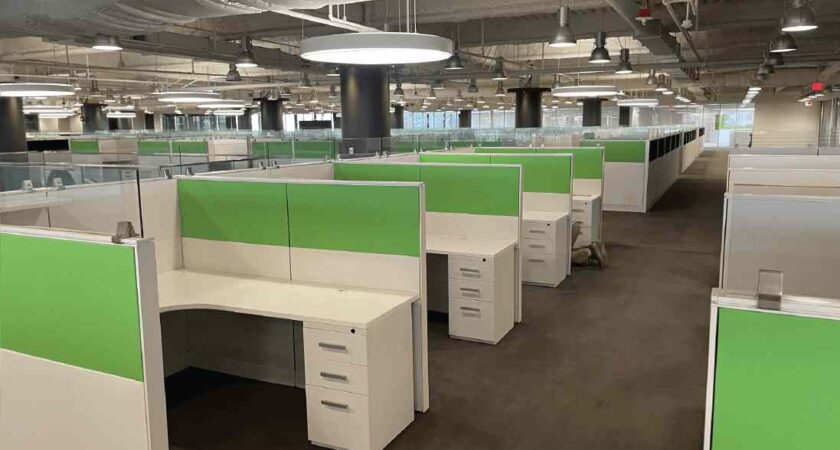The working space of a call center agent should be comfortable, ergonomically designed, and moderately simple. The comfort level of agent workspace depends on the correct furniture selection and the arrangement of office equipment. Ergonomics is significant in terms of the placement of items used in the work process, as well as the arrangement of workstations in the office. The last but not the least important point is the usage of efficient software, featured by the availability of an informative and intuitively simple interface for better user experience. In this article, we will dwell on all three aspects of agent experiences more closely.
Proper organization of the agent’s workplace
While performing daily tasks, a call center agent uses a computer at his workplace. Unfortunately, many companies pay poor attention to the acquisition of office furniture, enabling the agent to perform routine work for a long time with limited breaks. It is necessary to consider the seating, the comfort of the chair, and the presence of pull-out shelves for storing important information and tips in immediate proximity. It is essential to purchase computers that allow us to perform work in the chosen program environment. The matter in question is optimal performance. There is no need for gamer systems, but you should not buy computers about a decade old. The overall operator workplace organization can be divided into two blocks: the arrangement of the workspace and the provision of the necessary equipment.
Arranging the workspace
To reduce the level of general background noise and scattering, it is necessary to create a separate agent workspace for each employee. A well-thought-out workspace layout can significantly increase productivity by providing adequate space for all contact center agents.
It is important to understand that call center employees and telesales agents spend most of their working day at desks in front of a monitor. Therefore, the convenience of operator workstations is of fundamental importance: the ergonomics of the office chair, the height, and size of the desk, as well as the layout of the screen and keyboard. All of them are crucial for the health and well-being of employees.
But don’t forget about the psychological health of operators as well. Sometimes, monotonous and demanding work in a call center requires a certain balance with the opportunity to deal with agent frustration and regain energy and peace of mind. Therefore, special places where agents can catch their breath during a break should be separated from their workstations to minimize the feeling of pressure. The main purpose of creating such a space is to increase the level of amicable interaction between agents and thereby prevent agent burnout. Thus, an atmosphere of social cohesion is created and the efficiency of agents in the workplace is increased.
Required equipment
In the case of IP telephony, one must use the corresponding physical phone. However, more and more companies are switching to the use of softphones. This specialized software represents a full-fledged analog of a regular means of communication in digital terms. This software can be used not only to dial a number but also to make video calls (you will additionally need a web camera).
One of the most important in providing the workplace of a call center operator is the availability of a quality headset. Headphones with a microphone are something you should not be economizing on. To ensure that there are no echoes, noises, and other extraneous sounds, it is necessary to equip agents with decent models of audio devices.
Software tools for maximizing user-friendliness
The agent performs all his work via a special interface – the monitoring panel of the CRM system. This is a business tool, which contains all the facilities for accomplishing the specified tasks. Some requirements of the interface include the following moments:
- fine (individual) customization;
- advanced functionality;
- intuitive management;
- user-friendly visual presentation;
- interaction with supervisors;
- the analytical output of useful information;
- integration with the phone book (directory).
In addition to the integration of call center software with CRM, you also need to consider its other features. For example, when it comes to a large-scale call center with several groups of operators with different specializations, an ACD system is a must-have tool. Automatic Call Distribution (ACD) is a tool that works with incoming calls: its main function is to distribute subscribers into queues according to various criteria. For example, when a VIP client calls, the system can automatically route his call to a special agent who serves such clients.
Also, by using ACD in combination with an IVR menu, you can boost efficiency even more. Thus, based on the answers that callers provide in the digital IVR menu, ACD will direct them to the most appropriate agent who can handle customer issues in the best way possible, while avoiding poor service quality. What’s more, IVR is also great for reducing agent workload, as it can take over the task of answering frequently asked questions from customers if properly configured.
